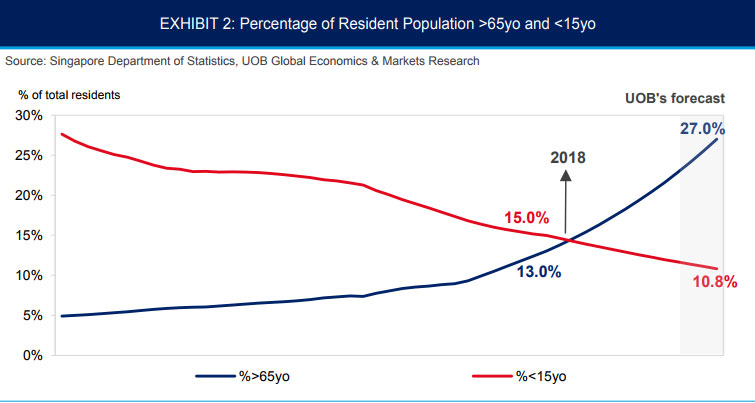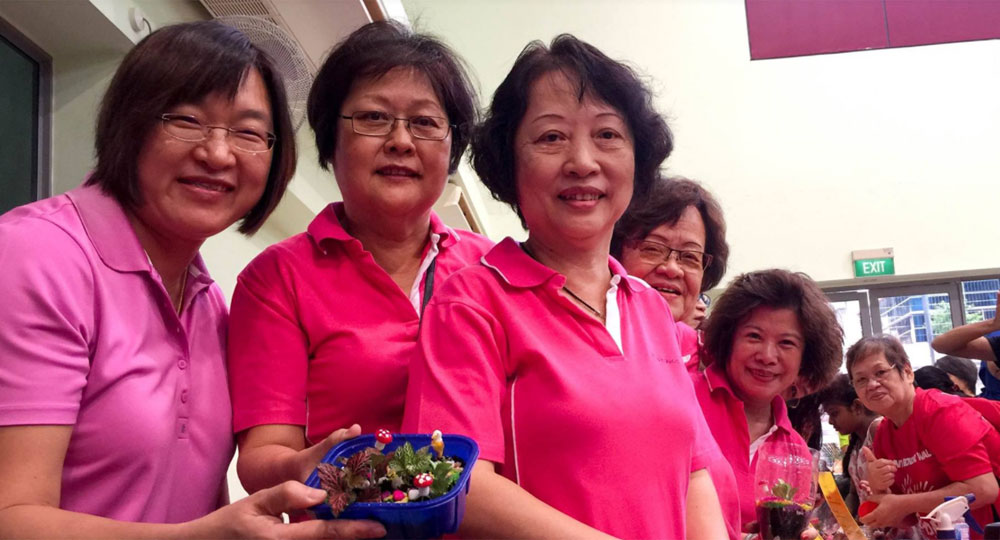Here's something to look forward to in 2018: A demographic time bomb in Singapore.
Same number of young and old
The demographic “time bomb” was coined in a Dec. 6, 2017 research report by UOB.
This means that in 2018, the number of elderly Singaporeans aged 65 and above and youths aged 15 and below will be the same for the first time in Singapore's modern history.

The red and blue lines representing the long-term trend lines of both population segments intersect in 2018.
Currently, the proportion of Singaporeans aged 65 and above is 13 percent, while those aged 15 and below is about 15 percent.
Singapore's demographic proportion similar to Japan in 2030
According to UOB's forecast, Singapore's percentage of seniors will hit 27 percent by 2030, while the percentage of juniors will decrease to 10.8 percent -- roughly where Japan is today.
Japan is the "oldest society in the world" with 26.6 percent of her population above the age of 65 and 12.9 percent of the population below the age of 15.
Singapore’s elderly population in 2030 will eclipse Japan’s of 2016.
[related_story]
Oldest in Asean
By 2030, however, the proportion of seniors in Singapore would have doubled to about 27 percent.
This figure is higher than in many Asian countries.
Singapore is already the oldest society in Southeast Asia.
The median age of Singapore's resident population, as of this year, is 40.5 years.
In Asean, the median age is in the late-20s.
By 2030, the median age of Singaporeans will be 47 years, compared to 32.9 years for the rest of Asean.
Singaporeans living longer
In 2018, Singaporeans are expected to live until the age of 83.3, compared to 71.4 for the rest of the Southeast Asia.
In 2015, there were 5.7 working adults supporting 1 senior.
In 202, this number will fall to 4.3.
In 2050, there will just be 1.5 working adults supporting 1 senior.
Solutions
There is still a sizable percentage of working-age population supporting the economy.
But the long-term solution would be higher immigration or fertility rates -- but fertility rates have been on the decline.
In 1988, the average Singaporean woman had 1.96 children.
By 2017, she had just 1.2 children.
The replacement fertility rate is 2.2 children per woman. It is the bare minimum to avoid losing population over the long term.
Here are a few interesting articles you should check out next:
My Mom went on a day out with a film camera. Here’s how she views the world
Why you should reignite that kampong spirit with your neighbours
If you like what you read, follow us on Facebook, Instagram, Twitter and Telegram to get the latest updates.
